
Publishing a book without a strong community or a solid fan base is like sending money down the drain. Your target readers must see you as someone with a strong sense of thought leadership and a reliable expert in your chosen niche. You can establish such a reputation by strategically using your content and the power of the internet. Juliet Clark shares practical tips for improving your online visibility by consistently producing high-performing posts on social media. She explains why you must share other people’s work, maximize on current trends, and even share your rants and memes! Learn how improving audience engagement and building deeper relationships can deliver a positive impact to your future book sales.
—
Watch the episode here
Listen to the podcast here
How The Strategic Use Of Content Can Lead To Thought Leadership
We’re going to talk about why content is the key to thought leadership. This is about building trust and a fan base for your platform. It’s important as we go along to understand that just splashing your book out there without any fan base is going to be a futile effort simply because there are so many new books every year that come out that people are going to have a really hard time finding you.
Being able to attract the audience, grow the audience, and bring them into your book launch is a must. The other really great thing about the trust building is if people like your book, and before they get to the book, they might decide that you’re their person to buy other products and services from. It’s important to build that trust and thought leadership.
Your goal here is strategic visibility. The number of books you sell depends on you being able to build a platform. I’m going to give you a great example. When my first book came out, I did not have a platform when I was a fiction writer. I sold 133 books. By my third book, I had put the time into building the platform and sold over 25,000. That audience can make a huge difference in what you’re doing. Audience building sells more than just books. As you’re nurturing, attracting, and putting great content and value out there, you’re also building an audience and showing people your unique take on an expert status. What makes you relevant?
If you think about it, hundreds of publishing companies are out there, but there are ways that we are different. We’re more transparent. We explain what’s going on. That’s what sets us apart. That’s what people are looking for in you as well as an expert. They’re looking for those places where they can get to know you. They can figure out your spin on a particular topic, your take, and why your take is what it is. That’s what’s really important. When I first got into this business, I was more of a rebel because I didn’t like what I was seeing in the self-publishing world.
That made a huge difference because people started realizing that, “I can put that money out. I don’t have to let them take part of my profits. I see what’s going on here. I have to build this audience if I want to sell books. Maybe self-publishing without a publisher and trying to do it myself on Amazon isn’t serving me well.” It was that take on how things were done in the industry that brought us the business because we were taking a different approach to it.
Your expert at status has to be a combination of your valuable information and authentically being you because that’s the other reason people hire you or they follow you. Remember when we did the why they buy? That is a really important piece of it. How does your personality mesh? Who are you talking to? It’s about sharing the information that makes you an expert, sharing it in a way that people understand and find valuable. That might mean that you give some tips and tricks. That might mean that you give them the whole shebang.
Here’s the thing that people don’t realize when they do this pushback on content, they tend to say, “If I tell them how to do this, then they won’t need to buy my book, or they won’t need to buy my program, product, or service.” The truth is that only about 5% of the people out there will even bother to pick it up and try. Being able to share that valuable information just puts you out there as an expert. Those people that pick it up will pick it up. The people who don’t probably never will, or they’ll try to do it themselves, get frustrated, and hire you. It’s important that you share that valuable information.
Only about 5% of people will even bother to pick up your book. You must be able to share valuable information with them that puts you out there as an expert. Share on XSharing Yourself
It’s also important that you share yourself because, as we found from the why they buy, that’s part of why they buy is because, for the most part, their style matches your style, so immediately they feel that connection. If I’m an action person, I want to work with an action person. That’s another reason why it’s so important to authentically share yourself because you don’t want everybody. Everybody as an audience doesn’t serve you. Remember I told you about there’s that little group, the Ks and the Ns, that, “I don’t work well with them.” It’s important to be connecting with the right people.
Also, being able to share that valuable information without being salesy, just give it away, freely give. Nobody likes someone who sells to them all the time. The other part of that is that it’s really hard, and we see this with press releases all the time. When we do a press release, we want an authentic original quote from you because you are a thought leader. The hardest part of that is you guys coming up with a quote. Some people that have been practicing this for a while will come up with one very intuitively, and it will be great. Others have to work on it.
That’s the result of not understanding that you are a thought leader and having those quotes available. A lot of people are too busy sharing other people’s quotes, and that doesn’t serve them. Your top goal is engagement. You want to be able to put things out there that people consume and engage. That’s going to take a while. Think about this as a relationship. The first time you see somebody or meet somebody, you don’t go all in. You’re sitting back, getting to know them, finding out if you can trust them. It’s the same with your social media. It’s the same with all of your content.
An author’s top goal is engagement. You have to put things out there that people will consume and engage with, even if it takes you a while. Share on XPeople in this process expect instant gratification. I have to be honest. That’s mostly because the influencers out there are telling them how easy it is. You look at someone like Jack Canfield, and he has this huge audience. He didn’t build that in a day. He didn’t even get a publishing contract. He had to self-publish to even sell books. That trust doesn’t happen in a minute. You have to be able to give this time and be able to adjust. We showed you this before, Alida Morrill. She’s on social media, but she didn’t understand email campaigns. She didn’t understand opt-ins or videos.
She understood videos. She knew how to make a video, just open up Zoom. Anybody can do it these days. When we started putting her lead magnet and her content together, she got it immediately. Now, that’s what she works on, her content calendar, her posts, mixing up those posts, and we created the opt-in and the video series so that she could get people into her email list. For other content goals, you are literally taking people from being followers to fans. You need to jump in and make comments when people comment. You don’t let it sit there. You’re starting to build a relationship.
You also need to have a CTA on every content that transitions people to your platforms. Remember, social media is not your platform. It belongs to the platform owner. You have to transition them on there. That doesn’t mean that you can’t communicate and gather them, but you need to get them into your email so that if something happens to that platform, you can have a way to contact and still communicate with them. This requires traffic drives.
High-Performing Posts
That’s why the name of our new site is Author Traffic School because people don’t understand that you need to generate that internet traffic to get people to the book. That starts way before the process of publishing your book. You need to be able to nurture into a purchase. Let’s get into some high-performing posts. The reason we’re putting them out there is we’re going to want you to experiment with these and find out what’s working and what’s not working, what your audience likes, and what they don’t like.
When you do this randomly with hit-and-miss, you never find something working. When we start to look at the analytics, trying different things, and seeing what the engagement looks like, once we figure out how our audience likes to engage, now we can replicate that. That’s exciting. That exponentially builds your platform. First of all, writing articles. Get out there and write articles. Write articles for magazines and other blogs. Write your own articles. Make sure they’re on your website. If you’re leading people back to your website to read an article, you’re creating SEO of your own, especially if you’re doing it on a weekly basis as you should be.
Also, you can use LinkedIn Newsletter and put some of that content out there. We don’t have a complicated process with it. We literally take our show every week. We write a paragraph or two, that’s our LinkedIn newsletter, and we link to the show so they can get more. We link to the show back on our website. Why do we do that? We do that because the way our show is built on our website, there is an article, so now we’ve just provided that content in a way that readers can read. We are doing it in video. Those people that are video people, it’s right there, and they can use the video. If they’re just listeners, they can listen to the show from there as well.
We’re not only creating SEO for our site, but we are hitting all of the learning modalities as well. There’s nobody left behind. Visual quotes, put these together in stylized graphics. Now, we used Elizabeth Gilbert’s here. Ideally, you would put together your own and put them out there since you are a thought leader. Next is video. In 2022, video was consumed 85% of the time on the internet. It does help you to connect with that modality. Even if you have to open up Zoom and put together a training, a short video, or a show, whatever it is, have video available.
If you’re over on LinkedIn, remember they don’t like anything that’s longer than ten minutes. That is exactly why, with the LinkedIn newsletter, we have a couple of paragraphs, and we link to the video that’s over on our site. If we took the podcast video and uploaded it, which is usually 20 to 30 minutes, LinkedIn wouldn’t like it. They might not even show it. Be sure and create that link, so you’re creating your own SEO. Next is polls. Polls on social media are really powerful tools. There are a couple of ways you can use them. Most social media platforms have their own polls that you can create right from the post. I know we’ve done one on LinkedIn. They’re a little bit limited.
You can also create a quiz, which is an opt-in. I prefer that one. We have a lead magnet system that we use and build quizzes for a lot of our authors who buy them because it takes the topic. 1) It shows people where they have deficiencies and what this author is teaching. 2) It has what we call a commitment section. We find out if people if we’re talking to somebody that’s part of what I call the broke house crowd or if we’re talking to someone who’s generally interested that would spend money on products and services to learn how. It also creates a situation where if they have a high commitment score, they’ll get an appointment with us. There are a lot of different things inside that quiz.
Trends
The reason we love that quiz is because it’s a win-win. If you’ve ever seen some of those quizzes that you’ve taken, you can tell all it is, is leading people to an appointment with you. This is so much more because it gives them valuable information. There’s no, “you’re a wacky wizard at the end. Please schedule an appointment with me,” which is useless. Next is trends. You are an expert. Share some of the trends in your area of expertise and give an opinion. I’m going to give you a great example, Carrie Schell. Carrie Schell just put out her book, The Grey Drinking Reset.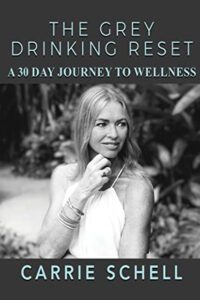
The Grey Drinking Reset is a book that allows people to reset their drinking, “Let’s get rid of the drinking if you’re drinking too much.” What we did was on Epoch Times, there was an article that I shared with her, and she went over it, put it on social media, and commented on it, “What a timely article. I love teaching and helping people overcome their problem with drinking too much.” She gave an opinion on the area of expertise. She added to it. Also, I’ve done this several times, and I’ll see an article about publishing that I was like, “That is way off.” I will share it and say, “There are some points in this article that are really great, but I highly disagree with these points, and here’s why” You are the expert. Act like an expert.
Sharing Other People’s Content
Sharing other people’s content, do it for the right reasons. When social media first got out there and started, they said, “If you share an influencer’s work over and over, they’ll notice you and bring you in. They’ll want to know who you are, and they’ll help you.” That’s not the case at all. Most big influencers have teams. The teams could care less. I will say this. Sometimes, that’s not true. We just found out about Sarah Carlson’s book, Facing Financial Fears. She brought to my attention that Sharon Lechter’s team was following her.
that Sharon Lechter’s team was following her.
This is different. She wasn’t sharing stuff. Somehow, Sharon’s group came across her. When it came time to get an endorsement for the book, we got one from Sharon Lechter’s group because they had been following Sarah’s content. If you’re going to do it, do it for the right reasons. Do it because it’s interesting. Do it because it matches what you’re talking about. Don’t do it because you want to get the attention of the influencers because, chances are, that’s not going to happen. Share it because there’s a point. Do it sparingly. Remember, you’re an expert. You want people to follow you, not you to lead your people to follow them.
Behind The Scenes And Brand Milestones
Next is behind the scenes. Share a little bit about what’s going on in your company behind the scenes that are relevant to your audience. In 2016, I had a coach that every call we got on, I had to stop attending her calls because they started going on for three hours. She would spend the first hour with what’s going on behind her company. I remember sending a couple of my people over to see what she was doing, and they came back, and they’re like, “I’ve got an hour. I didn’t learn anything. She spent the first hour talking about herself.”
Share what’s behind the scenes, but share it in a way that will help people. What I have here is what I did on my summer vacation. This was a cool episode of our show because we got an intern from San Diego College, and she spent the summer with us. We did a whole episode where we talked about what she learned about book development, platform building, and publishing that summer that she didn’t know before. For a beginner to jump in and learn all this was really helpful for our audience.
It was a fun episode, too, because she was a little bit shy. She’s like, “I want to be an author. I’m going to have to get out here and do this, but I’m finding myself being shy on your show right now.” Share that stuff going on behind the scenes. I like to share failures, not because I don’t like myself but because I tend to look at things and say, “I’ll give that a try. If I fail, I love to share why it failed so that it shortcuts other author’s journeys.” Sometimes people might try it just because I failed at it because they see something that I didn’t, so good on them.
Next is brand milestones. It’s always great to share successes and share failures. I just shared why you should share the failures. If you look at The Domino Diet, this is Karie Cassell, who is a wealth of health expert. She’s a dietician in Canada who has an amazing practice. She shared with her audience a milestone. Her book was coming out, but she shared along the way, too, as she created programs, products, services, and her book. By the way, if you’re looking for a diet book that is meaningful, this is one of the most meaningful. She has a great sense of humor, and it comes through. It’s not just a boring eat this, eat that. She shares some great stuff.
Highlighting Clients
One of the things I learned, your body renews itself every 120 days. While I was working with her, I quit sugar. Believe me, I would stand on a street corner for sugar. I hate to say that, but I gave it up for 120 days because of that because I just wanted to test it. Next is highlight clients. This is something we do a lot. When you promote other people, a lot of times, they are willing to refer business back to you. You can see we highlight clients all the time. We do it on the show. We do it through our magazine. We do it through the post. We want to bring visibility to the people who have come to us for services. Highlight clients. Highlight movers and shakers in the business.
Memes And Rants
Don’t be all about yourself because, at the end of the day, nobody cares about you. I know that sounds awful, but they care about what you teach. They care about learning. They love it when they see results. Share as much as you can and highlight your clients. Give them some visibility, too, unless you’re doing something you can’t share. We’ve had a couple of clients. Peggy Matheson is one who works with trauma. You can’t share that. You know if you can share and if you can’t share, but there are some professions where it’s just not possible. Next is memes. Make the memes, but use them sparingly, and make your own.
This should say something that Juliet Clark would say. When you make it, don’t rely on doing this all the time. You need to mix it up here. That’s why I’m saying try different things and mix it up on your content calendar. We never have the same thing on our content calendar. We do, but we share it in different formats. We have that LinkedIn newsletter we share. We have the show that we share, audio, video, and written. We share the magazine articles. We have an abundance of things we share. Sometimes we’ll throw in new books that we share. We try to fix it, so our audience doesn’t get bored.
Next is rants. Rants are good things, too. Use them sparingly. I made my business on rants, I have to say, where I really dug into the self-publishing industry. Back when I started, the self-publishing industry was brand new, and the traditional industry was still badmouthing it. Now, these days you have to wonder why you just don’t pay to have your book published because the traditional publishers aren’t going to promote your book. That’s why they want you to bring so many followers to the table. It’s important when you do a rant that you don’t want to come off as the angry old cat lady. You definitely don’t, so it can’t be all the time.
I know I did one. Mark Hirschberg sent me an article, and I did a little rant about the article. “This is why I disagree with this. This is a big misconception in the publishing industry, and I just want to give you the other side of it.” That might be a rant. I did more serious rants back in the day, but don’t do it all the time. You just look angry. Every once in a while, if something triggers you that’s going on, you see an article or see a video, comment. Do your own little rant. Comment on current events. If something relevant and current impacts your field, comment on it and share it.
When we work with our media specialist, Jackie Jordan, those would be called sound bites. Sound bites are those pieces of our platform that we pick up and write to get on TV or radio. When Jackie puts out a query, let’s say Newsmax is looking for someone to come on for three minutes to talk about XYZ, you submit those sound bites to Jackie. Jackie submits them to the reporter or news outlet that is looking for that area of expertise, and then they choose. That’s why you should be up on current events in your area of expertise as well.
Always have a call to action. You need to put out breadcrumbs and lead people to your funnel or where they need to go next with as few clicks as possible. That’s why you should have a call to action on every single piece of content you produce, whether it’s leading them to a podcast, an opt-in, or a course. We tell people when they’re email marketing to always have a PS. Lead those breadcrumbs for people to follow on the platforms they’re comfortable with, not the ones you’re comfortable with. If they’re a LinkedIn person, make sure you have a place on LinkedIn that you can lead them to.
Social Media Pointers
Social media must, and all of these have to be in play. You can’t just choose one and focus on it. You have to be doing all of them at the same time. Here’s what we’re doing. We’re training our audience to be excited about what we’re promoting. I know this works personally because I have some podcasts I listen to. I know when they come out. I’m not going to mention which one, but there’s one that comes out every Friday night. I don’t listen on Friday night, but when I go to the gym on Saturday morning, that’s what I have in my ear.
I have another podcast that comes out Tuesday and Thursday mornings. That’s my Tuesday and Thursday gym podcast that I listen to. If you’ve trained your audience to something exciting, they will show up. Consistency. If you’re going to post three days a week, consistently post three days a week. If you’re going to release a podcast once a week, make sure it’s out, and it’s out on time. I had a person one time an author tell me that she writes a blog every week. I went over to her website while she was on the call, and I was like, “You haven’t put a blog in here for nine months,” and she was like, “It’s been that long?” Make sure you have it on your content calendar, which we’ll talk about next time to produce in a consistent way.
The next thing is you must monitor. You need to keep going back and monitoring the post so that if people engage, you can engage back with them. That’s super important. You’re just not putting it there and then being silent. The purpose is to get them into a relationship with you. The third is analysis. You need to analyze what’s getting a lot of play and what’s not. Remember, in the beginning, I said we want to replicate what’s working well and get rid of what’s not. You need to analyze in order to know what’s working well and what’s not.
If people engage, be sure to engage back with the purpose of building a deep relationship with them. Share on XNext is engagement. Be sure that you engage with those followers in some way on a regular basis, whether that is through the polls. Get on there and engage because that’s where the relationship starts building. Your author platform is different from anybody else’s out there. The reason I say that is everybody’s going to have a different funnel-to-relationship ratio. We’re going to talk about that a lot more if you’re in our bigger course. We’re going to talk about funnels. You want to be able to attract people with the funnel but get them into a relationship with you, a personal relationship, because we are all better in person. That’s where the trust begins.
I’m going to give you a great example. Online dating. You don’t fall in love with someone online, emailing back and forth. It’s when you meet them in person you find out if they’re trustworthy, and you take the next steps with them. It’s the same here. It’s like dating. Consistency. How many days a week? What kind of content? How are you going to present that? Remember, I talked about the three learning modalities. One of the things that happen with social media posts and content is people start thinking over and over, “I have to reinvent the wheel every time.” You don’t have to. You can repurpose content in a lot of different ways.
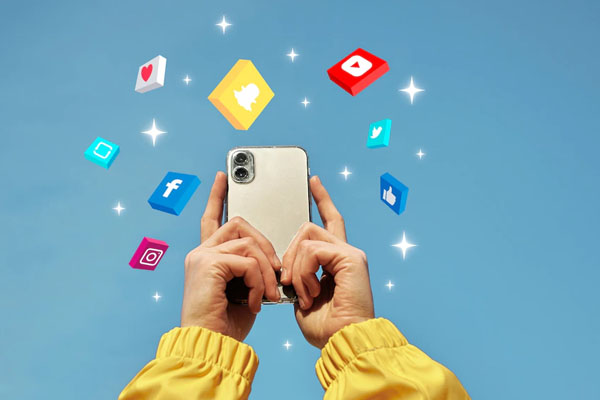
Thought Leadership: Most people think that posting on social media requires reinventing the wheel all the time. You don’t have to do this since a lot of content can be repurposed in many different ways.
I’m going to give you an example of how we do that. We record our show. It’s on Zoom. We upload it, and it comes out in a blog. It goes to all the shows, so audio, and then it goes to Roku, Apple TV, and YouTube. There’s one iteration. We take some of those articles and put them in the magazine. We have them repurposed in a lot of different ways so that people can consume it. Maybe if they miss something in one place, they can pick up something in another. Make sure there’s engagement.
All of this consistency starts with the content calendar. That content calendar is the piece that keeps you on track and knowing that you’re doing what you said you were going to do. It keeps you on commitment. Next is call to action. Remember, I told you that the person who owns your audience on a social media platform is not you. Facebook is owned by Mark Zuckerberg. It’s been proven in the past. He changes an algorithm, and you could lose years of audience building. It’s very important for you to transition people from social media into the platforms you do own, like your email list.
You want to make sure that you always have a call to action on every single piece of content so that your audience is not only growing on a social media platform, but it’s growing on your email list as well. How do you do that? Have a lead magnet mix. You need at least four lead magnets. You don’t want to exhaust people with just one lead magnet. To give you an example, I’m just telling you about two of them we have here. We have a strategy evaluation quiz. We also have Breakthrough Author Magazine.

Thought Leadership: Make sure to always have a call to action on your content. This will allow your audience to grow on a certain social platform and build your email list as well.
The quiz would be a more cerebral exercise. Let’s find out where we’re at. We make it a 2 to 3-minute experience, and we do that because nobody has an attention span these days. The magazine is a visual experience where people are taking a little bit longer. They’re getting tips and tricks. Have a couple that is different ways of communicating. Alida, I showed you the testimonial towards the beginning, her first lead magnet that we developed was a video series, and it was a series of seven videos. They were about two minutes a piece on mindfulness, how to get some inner peace quickly. Have different things like that in different modalities with your lead magnets.
Lead magnets don’t have to be hard. The biggest, most opted-in lead magnet we ever had as a publishing company was a publishing checklist. We did 2,500 in a month. It was me making a checklist. I thought it was the stupidest thing I’d ever done, and I couldn’t believe how many people grabbed it. Don’t make it hard. It doesn’t have to be hard. You’re an expert. You have some easy stuff that you can do. I’ll give you an example here of why you need content.
Lesley Michaels is one of our authors of On the Shoulders of Mighty Women. When her book came out, she had a podcast. A lot of the people that promoted her were her previous podcast guests. You can build power partnerships along the way with content, too. I personally find a podcast as a very powerful way to build power partnerships because I get to meet new people that are guests on my show. Where she built the content portion of her platform was a podcast. See you next time.
Important Links
- The Grey Drinking Reset
- Facing Financial Fears
- The Domino Diet
- Breakthrough Author Magazine
- On the Shoulders of Mighty Women
Love the show? Subscribe, rate, review, and share!

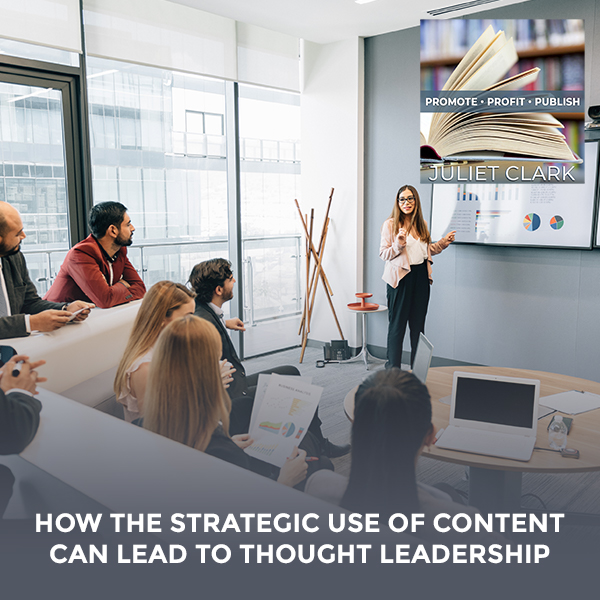


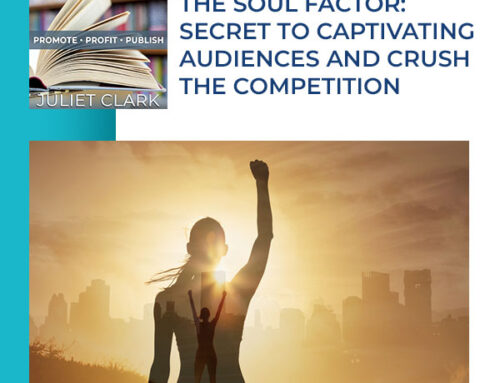
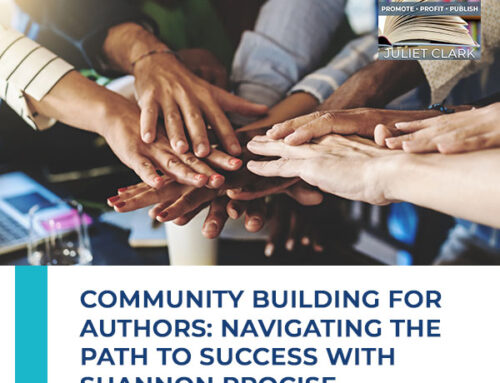
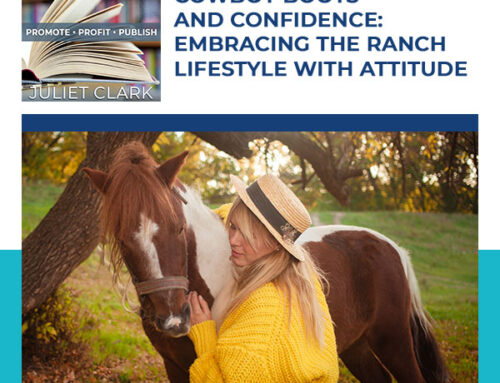


Leave A Comment